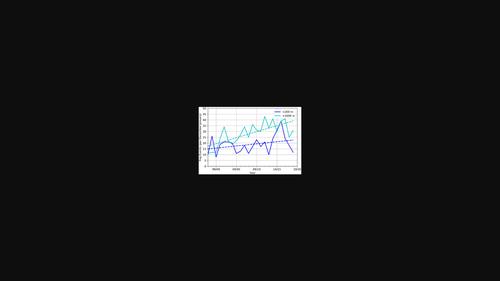当前位置:
X-MOL 学术
›
Int. J. Climatol.
›
论文详情
Our official English website, www.x-mol.net, welcomes your
feedback! (Note: you will need to create a separate account there.)
Fog trends in India: Relationships to fog type and western disturbances
International Journal of Climatology ( IF 3.5 ) Pub Date : 2022-08-14 , DOI: 10.1002/joc.7832 Daniel K.E. Smith 1 , Stephen R. Dorling 1 , Ian A. Renfrew 1 , Andrew N. Ross 2 , Craig Poku 2
International Journal of Climatology ( IF 3.5 ) Pub Date : 2022-08-14 , DOI: 10.1002/joc.7832 Daniel K.E. Smith 1 , Stephen R. Dorling 1 , Ian A. Renfrew 1 , Andrew N. Ross 2 , Craig Poku 2
Affiliation

|
Fog is a major hazard in wintertime over India, particularly in the Indo-Gangetic Plains, leading to significant impacts for transport and human health. Using 3-hourly surface observations, from 69 sites across India, all fog and dense fog events between 2000 and 2020 are identified. For each event, the main fog formation mechanism is objectively categorized using a classification algorithm, distinguishing between radiation, advection, evaporation, precipitation or cloud-base lowering fog types. In contrast to the findings of other international studies, radiation fog dominates as the most common fog type at the vast majority of locations in India, accounting for 68.1% of all fog events and 70.0% of dense fog events. Statistically significant positive trends are seen in the frequency of all fog events at Delhi, Lucknow and Patna, in the Indo-Gangetic plains, between 1997/1998 and 2018/2019, dominated by comparable statistically significant positive trends in radiation fogs. Western disturbances (WD) are often linked to the formation of fog in India. Using a climatology of WDs, we show that 46.9% of radiation fog onsets in Delhi in December and January, the primary fog months, happened in conjunction with an active WD event. Conversely, only 32.3% of WDs during these same months coincided with the onset of a radiation fog event. WD-related radiation fog events are shown to cluster into three distinct groups, with WD centres located to the northwest (51.4% of cases), southwest (13.3%) and east (35.2%) of Delhi. Each cluster is shown to have coherent and distinct near-surface characteristics which are conducive to fog formation. Trends in WD frequency cannot fully account for the observed trends in fog events. We argue that the fog trends are more likely the result of a complex interaction between urban expansion and the associated rapid change in aerosol loading, resulting in impacts on radiation balance, microphysics and heat-island processes.
中文翻译:

印度的雾趋势:与雾类型和西方干扰的关系
雾是印度冬季的主要危害,尤其是在印度恒河平原,对交通和人类健康造成重大影响。使用来自印度 69 个地点的 3 小时地面观测,确定了 2000 年至 2020 年之间的所有雾和浓雾事件。对于每个事件,主要的雾形成机制都使用分类算法进行客观分类,区分辐射、平流、蒸发、降水或云底降低雾类型。与其他国际研究结果相反,辐射雾是印度绝大多数地区最常见的雾类型,占所有雾事件的 68.1% 和浓雾事件的 70.0%。在德里、勒克瑙和巴特那的所有雾事件的频率中都可以看到统计上显着的积极趋势,1997/1998 年至 2018/2019 年间,在印度-恒河平原,辐射雾在统计上具有可比性显着的积极趋势。西方干扰 (WD) 通常与印度雾的形成有关。使用 WD 的气候学,我们表明在 12 月和 1 月(主要雾月)德里发生的 46.9% 的辐射雾与活跃的 WD 事件一起发生。相反,在这些相同的月份中,只有 32.3% 的 WD 与辐射雾事件的发生同时发生。显示与 WD 相关的辐射雾事件聚集成三个不同的组,WD 中心位于德里的西北部(51.4% 的案例)、西南部 (13.3%) 和东部 (35.2%)。每个星团都显示出有利于雾形成的连贯和独特的近地表特征。WD 频率的趋势不能完全解释雾事件中观察到的趋势。我们认为,雾趋势更可能是城市扩张与相关的气溶胶负荷快速变化之间复杂相互作用的结果,从而对辐射平衡、微物理学和热岛过程产生影响。
更新日期:2022-08-14
中文翻译:

印度的雾趋势:与雾类型和西方干扰的关系
雾是印度冬季的主要危害,尤其是在印度恒河平原,对交通和人类健康造成重大影响。使用来自印度 69 个地点的 3 小时地面观测,确定了 2000 年至 2020 年之间的所有雾和浓雾事件。对于每个事件,主要的雾形成机制都使用分类算法进行客观分类,区分辐射、平流、蒸发、降水或云底降低雾类型。与其他国际研究结果相反,辐射雾是印度绝大多数地区最常见的雾类型,占所有雾事件的 68.1% 和浓雾事件的 70.0%。在德里、勒克瑙和巴特那的所有雾事件的频率中都可以看到统计上显着的积极趋势,1997/1998 年至 2018/2019 年间,在印度-恒河平原,辐射雾在统计上具有可比性显着的积极趋势。西方干扰 (WD) 通常与印度雾的形成有关。使用 WD 的气候学,我们表明在 12 月和 1 月(主要雾月)德里发生的 46.9% 的辐射雾与活跃的 WD 事件一起发生。相反,在这些相同的月份中,只有 32.3% 的 WD 与辐射雾事件的发生同时发生。显示与 WD 相关的辐射雾事件聚集成三个不同的组,WD 中心位于德里的西北部(51.4% 的案例)、西南部 (13.3%) 和东部 (35.2%)。每个星团都显示出有利于雾形成的连贯和独特的近地表特征。WD 频率的趋势不能完全解释雾事件中观察到的趋势。我们认为,雾趋势更可能是城市扩张与相关的气溶胶负荷快速变化之间复杂相互作用的结果,从而对辐射平衡、微物理学和热岛过程产生影响。











































 京公网安备 11010802027423号
京公网安备 11010802027423号